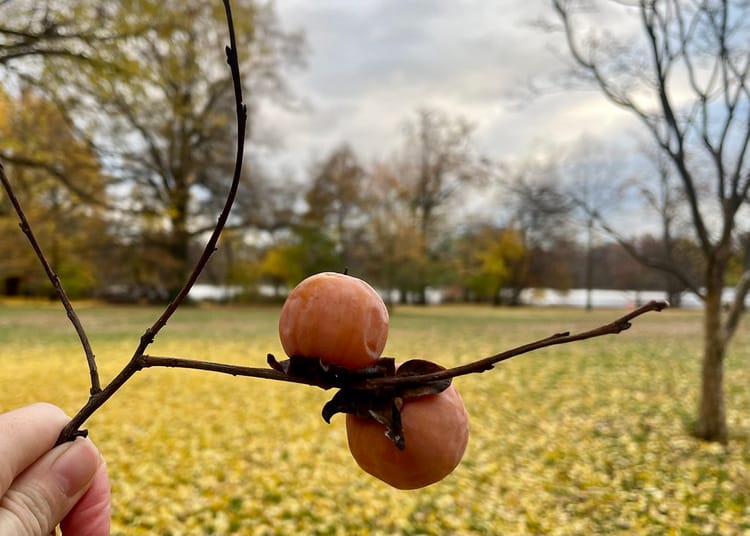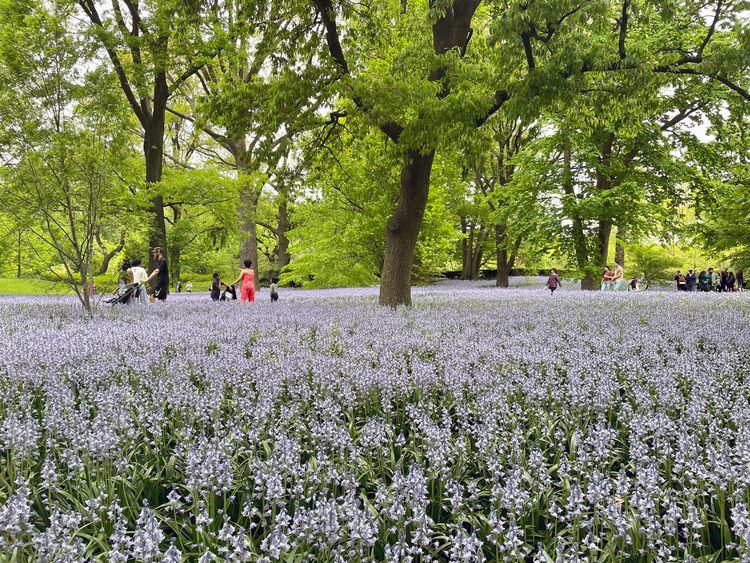Golden Carpet of Rancid Butter

These days, the ginkgo is a mid-career Sinatra, wistfully turning back the clock to golden summer, while acknowledging the coming winter with the acrid sweet stench of hangover breath. It’s one of the most common street trees in our fair city—almost one in 10 in Manhattan is a ginkgo. Perhaps one towers over your block.
Its fleshy seeds are scattered on the sidewalk, reeking of vomit, so you hurry past the brilliant yellow sprays above you. But today, look again at this glorious prehistoric echo and consider: its ancestors' branches may have harbored pterosaurs and shaded passing ceratopsians.
The putrescence you hopscotch around is the smell of butyric acid, the smell of nausea, the smell of mammalian guts meeting daylight. Once, eons ago, there may have been a creature who found this aroma enticing, and the ginkgo evolved to capitalize on its cravings. Every autumn, the animal eagerly gorged itself on the loud flavor of ginkgo seeds. It wandered off with a full belly, its subsequent deposit enabling the ginkgo’s spread to a different part of the forest. That hypothetical disperser is no longer with us, but the ginkgo’s incense still smolders in remembrance.
It is only the fecund female tree that drops stink bombs, but the males are not problem-free—their pollen is highly allergenic (a 7 out of 10 on the Ogren Plant Allergy Scale). “Why plant these bastards at all?” you ask. “They’re gluttons for punishment,” we answer. They shake off salt, they thrive under concrete, they laugh at pollution and cold weather and drought and uncurbed dogs. They can live for thousands of years. You are merely a twinkle in a ginkgo’s eye.
Soon, all their fan-shaped leaves will drop in a decisive flourish, carpeting the sidewalk in a lemony runner and you will think it beautiful under the streetlights. Until then, hold your nose and enjoy the Mesozoic holdouts before they are stripped down to the bone.

- One of the mightiest of the city's ginkgo trees can be found in Inwood's Isham Park. It's officially one of NYC’s Great Trees and has an around 60-inch trunk diameter. Go stand at the staircase at 212th Street and Broadway and marvel at its broad branches, luminous with golden leaves. Then look below for another historic wonder: the only surviving colonial-era mile marker on a Manhattan street that is lodged in the retaining wall and once advised travelers they were 12 miles from the city.
- The ginkgo is sometimes called a living fossil since it’s the only known representative of its ancient botanical family and is considered the oldest living tree species. Other living fossils you can encounter in the year 2022 in New York City include a fellow popular street tree—the dawn redwood—and the horseshoe crab. The Kentucky coffeetree that can be found around the five boroughs also has an evolutionary anachronism with its long pods that may have been consumed by some extinct megafauna.
- Although some may see the ginkgo berries as a nuisance, for many Chinese immigrants in New York City, they have been an annual foraging event. The Tenement Museum shares this Foodways Story from Tom Fong: “Little did they know of the hidden gold inside those berries. With the fruit washed away…inner nutshells oven-dried…and nuts cracked open and separated from the shell…taaa-daaaa….Ginkgo Nuts for soup!”




